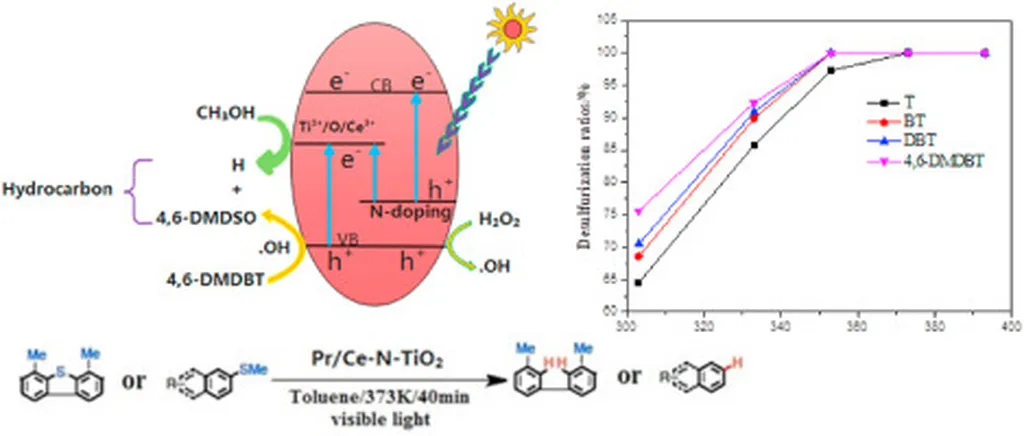In the quest for cleaner diesel production, researchers have made a significant stride by enhancing the efficiency of photocatalytic oxidation desulfurization. A study led by Suhang Xun from Jiangsu University and Suzhou University of Science and Technology has introduced a novel approach that combines nonstoichiometry molybdenum oxide (MoO3-x) with an imidazole-based ionic liquid ([C12mim]Cl). This innovation promises to revolutionize the desulfurization process, making it more efficient and environmentally friendly.
The research, published in *Green Energy & Environment* (translated as “绿色能源与环境”), focuses on the development of a photocatalytic oxidation desulfurization technology. This method leverages the superior electron transfer and visible light utilization capabilities of photocatalysts. By modifying MoO3-x with [C12mim]Cl, the team has successfully upgraded the electronic structure of the photocatalyst, creating a robust electronic transfer channel through interface H-bonding. This modification effectively inhibits the recombination of electron-hole pairs, a common challenge in photocatalytic processes.
“The interface H-bonding between MoO3-x and [C12mim]Cl acts as an electronic transfer channel, significantly enhancing the photocatalytic efficiency,” explains Suhang Xun. The results are impressive: a deep desulfurization rate of 96.6% was achieved within just 60 minutes. Moreover, the MoO3-x/[C12mim]Cl (MoC12) photocatalyst demonstrated outstanding cyclic stability, maintaining its performance over seven cycles in an extraction coupled photocatalytic oxidation desulfurization (ECPODS) system.
The implications for the energy sector are substantial. Traditional desulfurization methods often fall short in terms of efficiency and environmental impact. This new approach offers a cleaner and more effective solution, potentially reducing the environmental footprint of diesel production. “This study provides a new perspective on enhancing photocatalytic desulfurization through defect engineering and surface modification,” notes Xun.
The research highlights the potential for defect engineering and surface modification to enhance photocatalytic processes. As the energy sector continues to seek sustainable solutions, innovations like this could pave the way for more efficient and environmentally friendly fuel production. The findings not only advance the field of photocatalytic oxidation desulfurization but also offer a blueprint for future developments in clean energy technologies. With the publication in *Green Energy & Environment*, this research is poised to influence both academic and industrial efforts towards a greener future.

